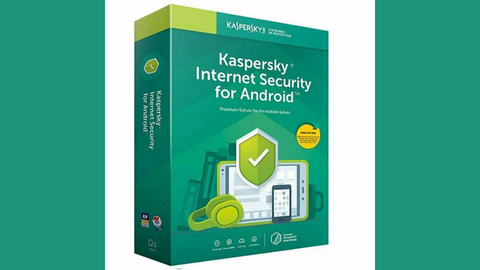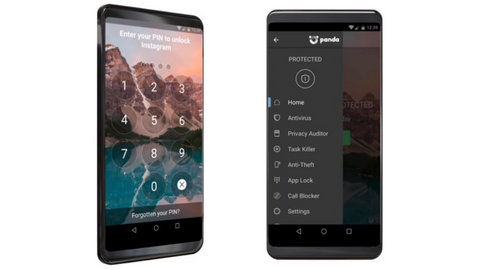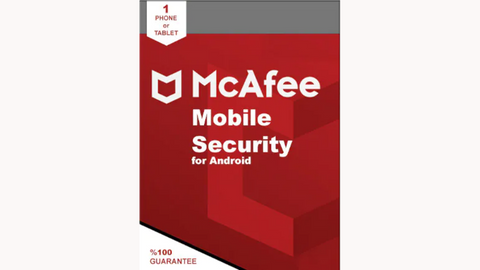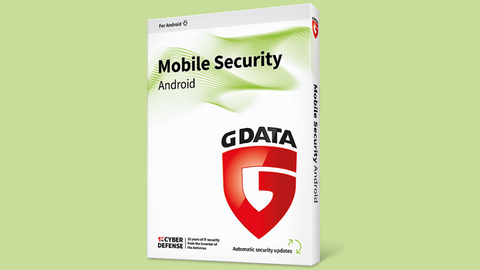Here, I will talk about the rise of smishing and how businesses can protect themselves from SMS phishing attacks.
The prevalent use of mobile devices for business has opened many opportunities for cybercriminals to exploit. The problem has expanded hugely recently, with the shift to remote working practices being one of the main drivers.
While the flexibility and accessibility offered by mobile devices present undeniable benefits for employers and employees, the escalating threat of smishing attacks cannot be overlooked.
The problem is compounded because mobile devices often operate outside established cybersecurity infrastructure. Effectively, they offer an unprotected backdoor into critical systems and confidential data.
This is the challenge that businesses need to face to protect themselves against the rise and increasing sophistication of smishing attacks.
Mobile Security Deals
Table of Contents
What Are Smishing Attacks?
The name “smishing” comes from a fusion of SMS and phishing. In essence, this is a text message-based form of “traditional phishing” that uses deceptive tactics to lure individuals into performing specific actions or divulging sensitive information and very often both simultaneously.
While most people are educated about the risks of phishing attacks, there remains a level of trust in text messages. It is this trust, along with the immediacy of text messages, that cybercriminals aim to exploit.
Among common key characteristics of smishing attacks are:
- Urgent Requests: Messages often convey a sense of urgency, prompting quick action.
- Deceptive Links: URLs that lead to malicious websites, often disguised as familiar services.
- Trust Exploitation: Posing as reputable entities, like banks or service providers, to gain the recipient’s trust.
Awareness of these tactics is crucial in recognizing and thwarting potential smishing attempts.
Smishing Attacks: A Rapidly Growing Threat Landscape
It is perhaps surprising that cybercriminals left mobile devices in relative peace for so long. The bigger fish that businesses represent were always more appealing targets, and for long enough, mobile and business devices were separate entities.
That is no longer the case – As businesses increasingly integrate mobile devices into their operations, they have become hotspots for cybercriminal activities. Several factors contribute to this shift:
- The ubiquity of Mobile Devices: Almost every professional now owns a smartphone, making it a vast and tempting target pool for attackers.
- Blurred Lines: The distinction between personal and professional use of mobile devices has become increasingly blurred, especially with the rise of Bring Your Device (BYOD) workplace policies.
- Immediate Response: Text messages typically elicit quicker responses than emails. Cybercriminals exploit this urgency, making smishing a highly effective phishing method.
- Lack of Security: Many mobile devices lack robust security measures in traditional business IT infrastructures, making them easier targets.
The convergence of these factors has led to a surge in smishing attacks, highlighting the need for businesses to recognize and address this growing threat.
Implication of Smishing Attacks for Businesses
The ramifications of any cybersecurity breach can be devastating to a business. Both in financial terms and loss of brand trust, the consequences of a cyber breach are wide-ranging and long-lasting.
Additionally, there are legal and compliance risks that need to be faced. This might sound like scaremongering, but as the points below detail, falling victim to a smishing attack is more than just an inconvenience:
- Financial Impact: Direct losses from fraudulent transactions are just the start. Costs rise with breach mitigation, customer notifications, potential lawsuits, and long-term sales decline due to eroded trust.
- Reputational Damage: Smishing attacks tarnish brand reputation. Negative media coverage and lost customer trust require extensive rebuilding efforts and resources, with some damage potentially irreversible.
- Legal and Compliance Repercussions: Breaches invite lawsuits and regulatory fines. Increased scrutiny from regulators means more audits and higher compliance costs for businesses.
- Operational Disruptions: Attacks disrupt business operations, diverting resources to manage the breach. The risk of losing proprietary information can have lasting operational consequences.
Any one of these is a major headache for any business. However, the chances are that a successful smishing attack will result in one or more of these consequences affecting a business.
Smishing Attacks: Strategies for Mitigation
Understanding the risks is the first step in successfully mitigating the risk of a smishing attack. Grasping the nature and scope of the risk helps to create a cybersecurity framework that is both robust and adaptive.
With a clear picture of the threat landscape, businesses can then focus on implementing targeted mobile smishing protection solutions, starting with a crucial element: employee education and training.
Employee Education and Training
Education and training are critical to a “holistic” approach to cybersecurity. Most employees are educated about the risks associated with emails, but this must be expanded to cover the latest generation of mobile threats.
Key areas to focus on include:
- Smishing Recognition: Teaching employees how to identify suspicious text messages and the common tactics used by cybercriminals.
- Immediate Reporting: Encouraging a culture where potential threats are reported promptly to IT or security teams.
- Safe Link Practices: Educating on the dangers of clicking on unknown links, even if they appear to come from trusted sources.
- Regular Training Updates: Ensuring training sessions are updated regularly to address the evolving threat landscape.
By emphasizing these areas, businesses can significantly reduce the risk of employees falling victim to smishing attacks.
Technical Safeguards
While employee training is crucial, it’s equally important to have robust technical defenses in place. These safeguards act as the frontline defense against smishing attacks:
- Mobile Threat Defence (MTD) Solutions: Tools that allow businesses to control and protect data on mobile devices, ensuring that only authorized devices can access sensitive information.
- Regular Software Updates: Keeping mobile operating systems and apps updated ensures that known vulnerabilities are patched, reducing potential entry points for attackers.
- Two-factor Authentication (2FA): An added layer of security that requires users to provide two forms of identification before accessing business systems, making unauthorized access more challenging.
- Anti-phishing Tools: Software solutions that detect and block phishing attempts on mobile devices, including smishing.
By integrating these technical measures into their cybersecurity strategy, businesses can significantly enhance their protection against smishing threats.
Proactive Monitoring and Response
A comprehensive approach to smishing protection should always take a proactive approach to monitor and have response procedures in place should the worst happen.
This involves implementing actions including:
- Monitoring Systems: Utilizing tools that continuously scan for unusual activities or unauthorized access attempts on mobile devices, ensuring early detection of potential threats.
- Incident Response Plan: A well-defined plan outlining the steps to take in case of a smishing attack is needed. This ensures a swift and coordinated response, minimizing disruptions and potential damage.
- Regular Threat Analysis: Periodically assess the threat landscape to stay updated on the latest smishing tactics and adjust defenses accordingly.
By adopting a proactive approach, businesses not only defend against current threats but also prepare for future challenges in the ever-evolving world of cybersecurity.
How Businesses Can Protect Themselves from SMS Phishing Attacks: FAQs
What are some red flags to look out for in SMS phishing messages?
- Urgency: Phishing messages often create a sense of urgency, pressuring recipients to act immediately.
- Generic Greetings: Beware of messages that address you generically (e.g., “Dear Customer”) instead of your name.
- Suspicious Links: Don’t click on links embedded in text messages, especially if they lead to unfamiliar websites.
- Requests for Personal Information: Legitimate businesses won’t ask for sensitive information like passwords or account details via text message.
What should employees do if they receive a suspicious text message?
Advise employees not to respond to the message or click on any links. Instead, they should report the message to the IT department or a designated security contact.
Can SMS phishing attacks bypass multi-factor authentication (MFA)?
While MFA adds a significant layer of security, some sophisticated phishing attacks may attempt to trick users into revealing the additional verification code. Employee education remains crucial alongside MFA.
What are the potential consequences of a successful SMS phishing attack on a business?
The consequences can be severe. Data breaches, financial losses, reputational damage, and operational disruptions are all potential risks.
How can businesses stay updated on the latest SMS phishing tactics?
Several resources are available. Subscribe to security vendor alerts, follow reputable cybersecurity blogs, and encourage employees to attend relevant training workshops.
Mobile Safety: Closing the Door on Smishing Attacks
The mobile frontier is the new battleground for cybersecurity. As smishing attacks evolve in sophistication, so must our defenses.
By combining awareness, technical safeguards, and proactive measures, businesses can fortify their mobile defenses, ensuring they survive and thrive in this challenging landscape. Remember, knowledge is power r, in the fight against smishing, and preparedness is the key.
INTERESTING POSTS
- How To Detect Email Phishing Attempts (Like A Geek!)
- The Gaming Industry Must Be Proactive About DDoS AttacCriticalKey Functions Performed By The Security Operations Center (SOEssentialant Considerations For Developing A Cybersecurity Strategy
- The Best Cyber Security Technology Trends You Must Know
- Cybersecurity Technical Writing: Main Points
- The Increasing Importance Of Cybersecurity
About the Author:
Daniel Segun is the Founder and CEO of SecureBlitz Cybersecurity Media, with a background in Computer Science and Digital Marketing. When not writing, he's probably busy designing graphics or developing websites.
Christian Schmitz is a professional journalist and editor at SecureBlitz.com. He has a keen eye for the ever-changing cybersecurity industry and is passionate about spreading awareness of the industry's latest trends. Before joining SecureBlitz, Christian worked as a journalist for a local community newspaper in Nuremberg. Through his years of experience, Christian has developed a sharp eye for detail, an acute understanding of the cybersecurity industry, and an unwavering commitment to delivering accurate and up-to-date information.













